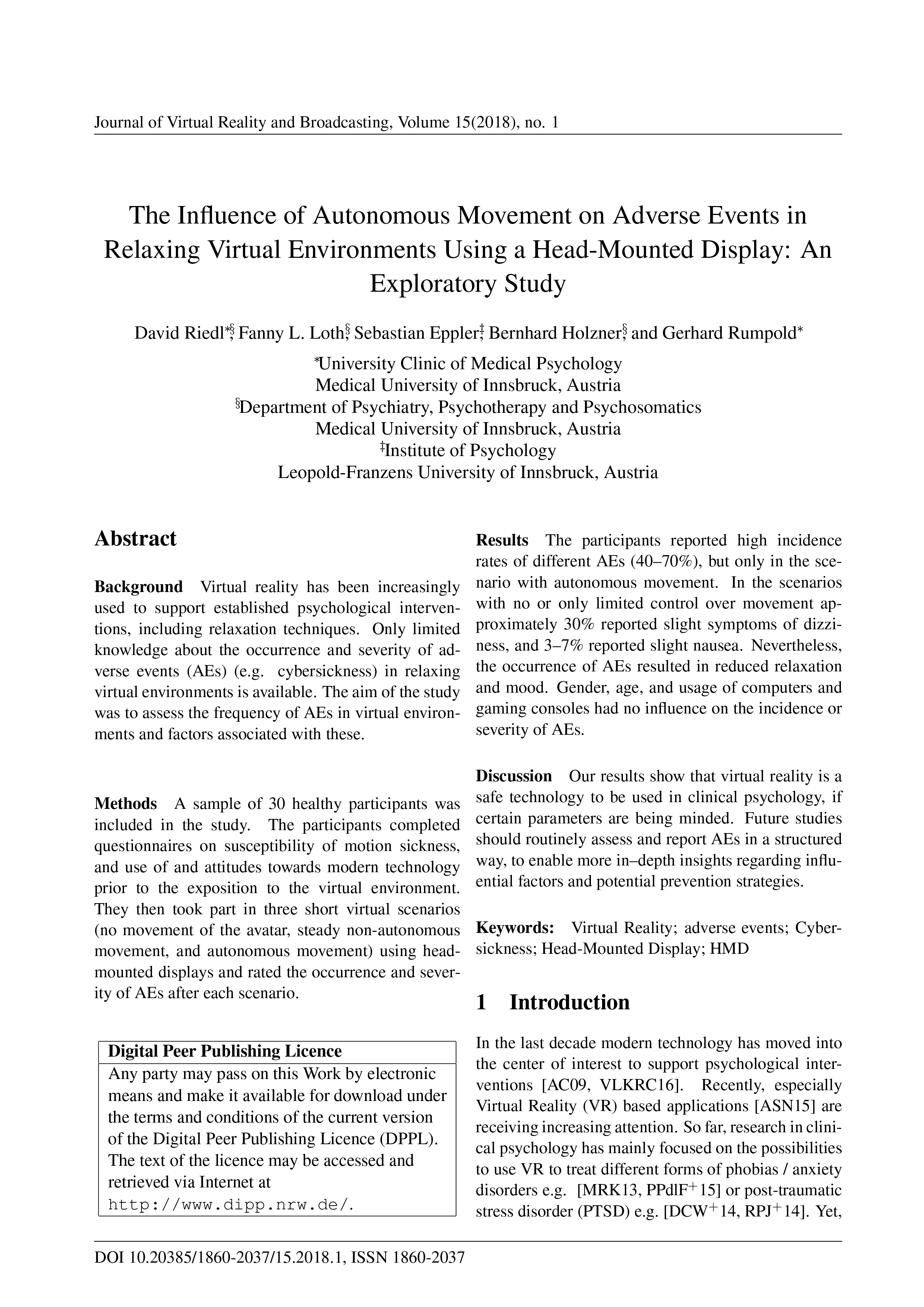The Influence of Autonomous Movement on Adverse Events in Relaxing Virtual Environments Using a Head-Mounted Display: An Exploratory Study
DOI:
https://doi.org/10.20385/1860-2037/15.2018.1Keywords:
Cybersickness, HMD, Head-Mounted Display, Virtual Reality, adverse eventsAbstract
Background: Virtual reality has been increasingly used to support established psychological interventions, including relaxation techniques. Only limited knowledge about the occurrence and severity of adverse events (AE) (e.g. cybersickness) in relaxing virtual environments is available. The aim of the study was to assess the frequency of AE in virtual environments and factors associated with these. Methods: A sample of 30 healthy participants was included in the study. The participants completed questionnaires on susceptibility of motion sickness, use of and attitudes towards modern technology prior to the exposition to the virtual environment. They then took part in three short virtual scenarios (no movement of the avatar, steady non-autonomous movement, and autonomous movement) using head-mounted displays and rated the occurrence and severity of AE after each scenario. Results: The participants reported high incidence rates of different AEs (40–70%), but only in the scenario with autonomous movement. In the scenarios with no or only limited control over movement approximately 30% reported slight symptoms of dizziness, and 3–7% reported slight nausea. Nevertheless, the occurrence of AEs resulted in reduced relaxation and mood. Gender, age, and usage of computers and gaming consoles had no influence on the incidence or severity of AEs. Discussion: Our results show that virtual reality is a safe technology to be used in clinical psychology, if certain parameters are being minded. Future studies should routinely assess and report AEs in a structured way, to enable more in–depth insights regarding influential factors and potential prevention strategies.
Downloads
Published
2019-07-17
Issue
Section
Articles




